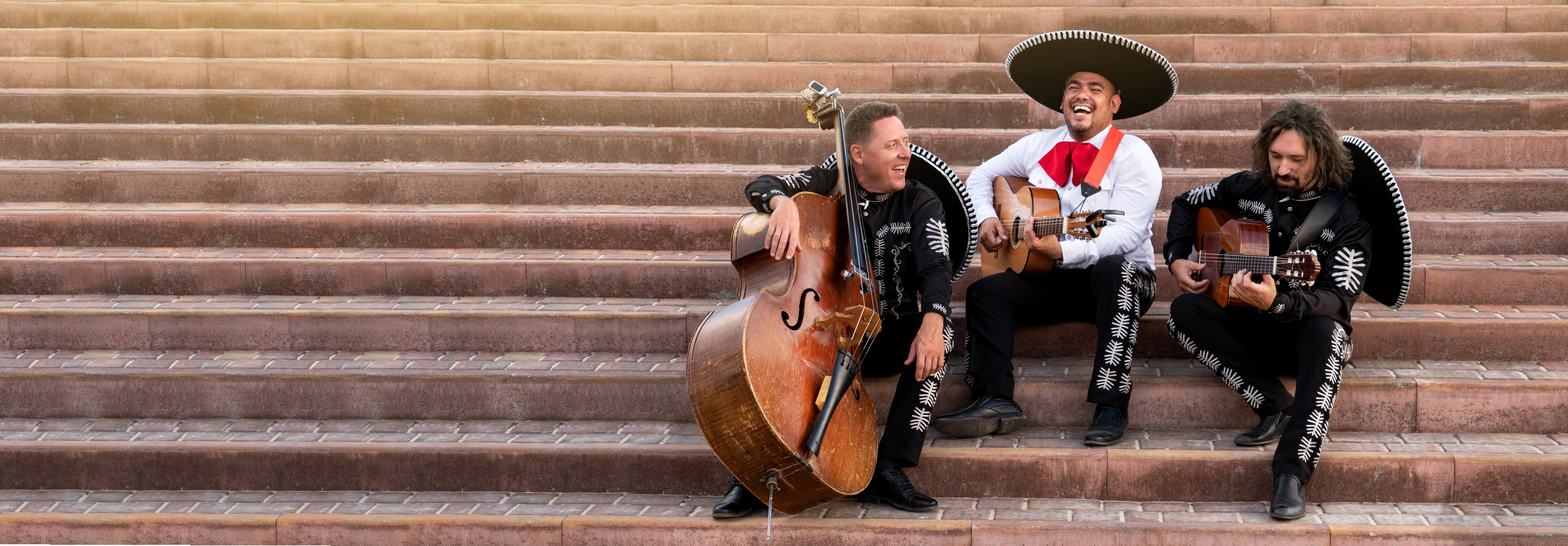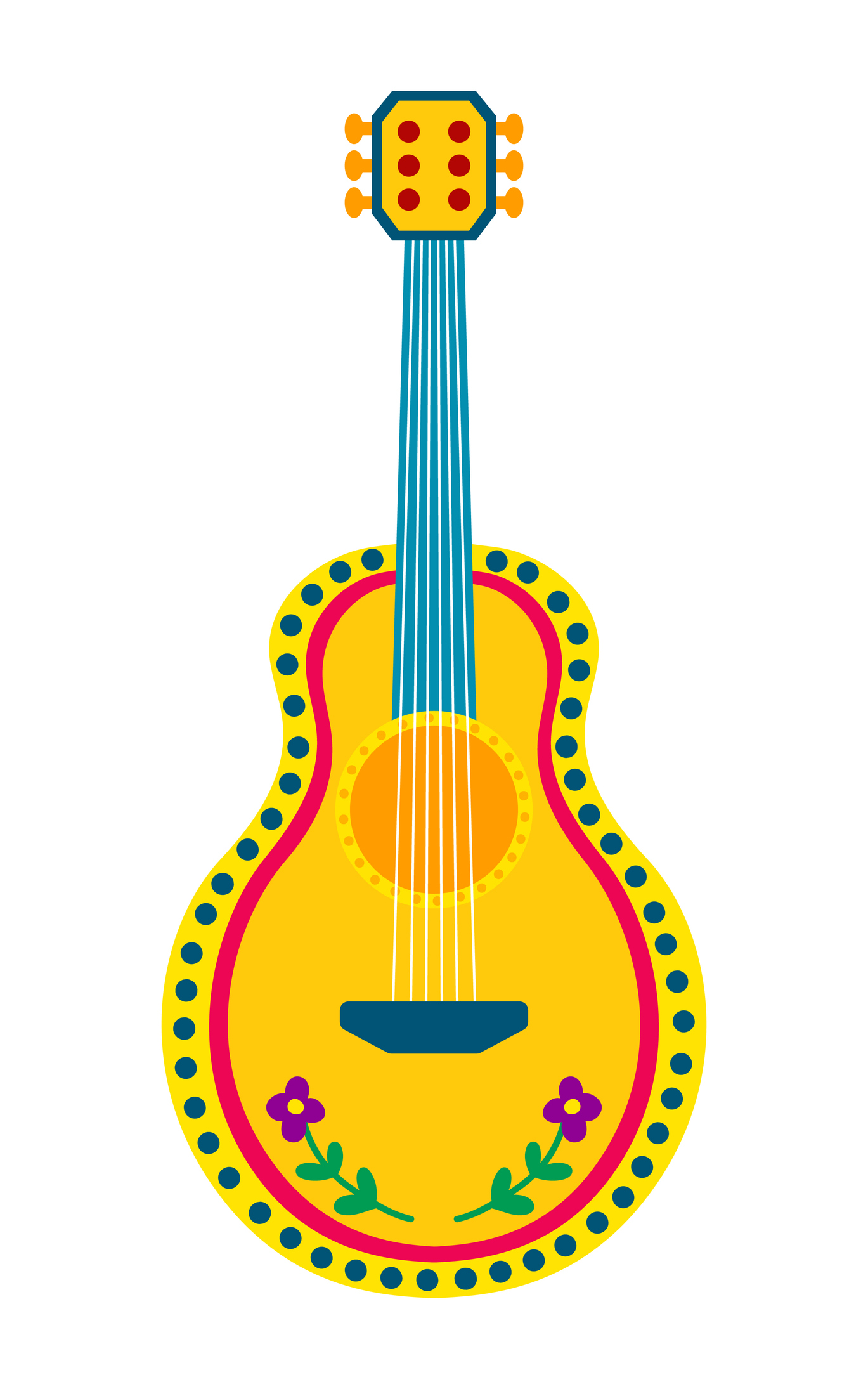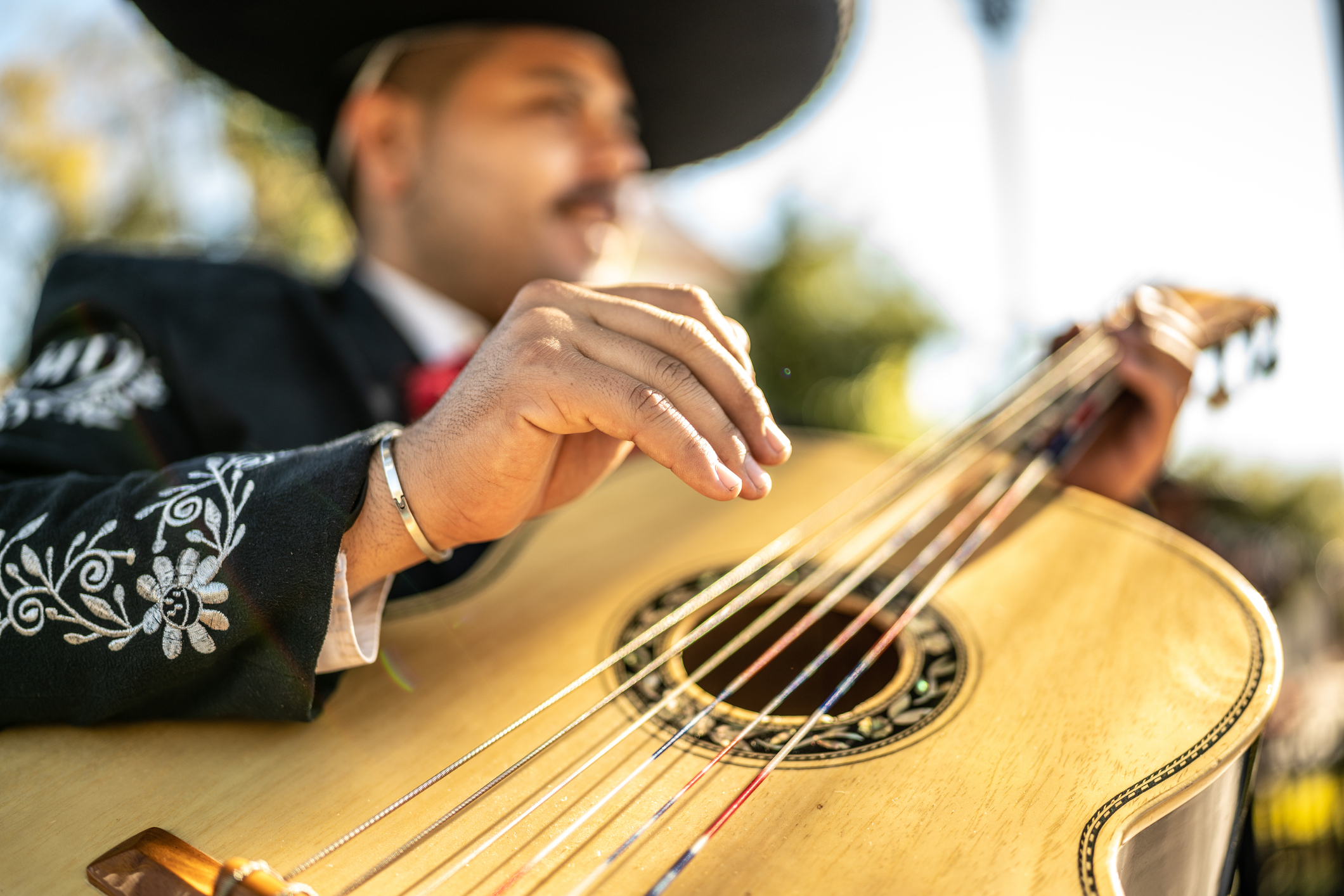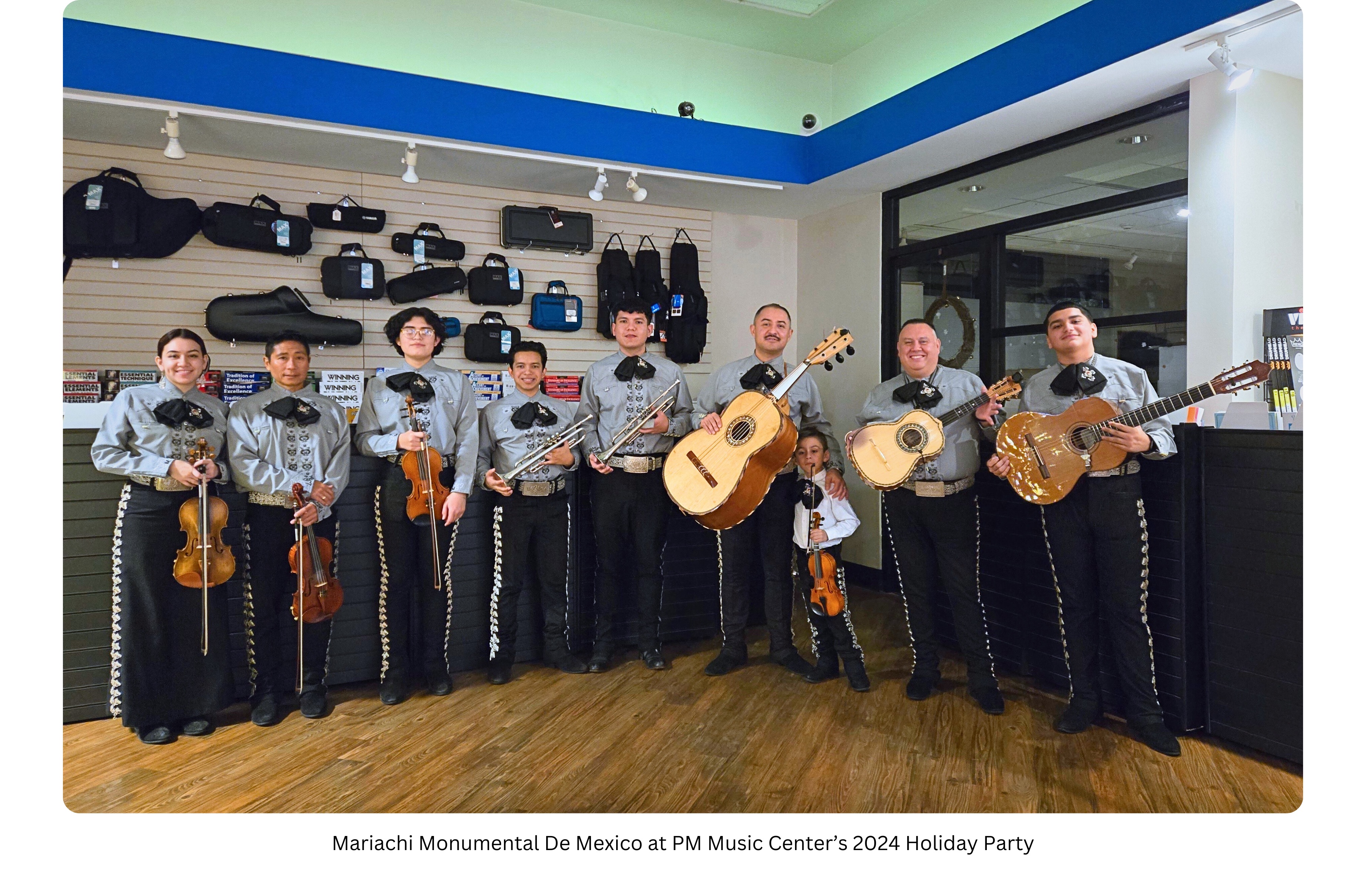

All Things Mariachi Instruments, History, Music, and More
What happens when you bring together extroverted singers, wonderful harmonies and toe-tapping rhythms? Mariachi music! Mariachi, a traditional Mexican folk music, is celebrated worldwide. The combination of special mariachi instruments with a distinctive singing style creates a unique and memorable experience. Combining brass, string and woodwind instruments, the music moves people and evokes emotions from romantic to inspiring to whimsical to comical.
Mariachi music dates back to the 19th century, and today it continues to represent a special emblem of Mexican cultural heritage and a source of pride while creating community connections and inspiring new generations of musicians and music lovers. Enjoy this Mariachi journey where we’ve covered everything from the history and evolution of Mariachi music to beloved Mariachi ensembles to the most popular mariachi instruments to our Mariachi Mercado where you can find all things Mariachi!
Mariachi Instruments Distinct Sound
The signature sound of Mariachi music comes from a combination of the mariachi instruments and vocal effects. In particular, the trumpet’s high-pitched tone is a standout sound in Mariachi music and often grabs the audience's attention. In addition, Mariachi singers often sing el grito, loud and enthusiastic and full of energy and el llanto which shows more passion and emotion, often a sad tone. The most common songs played by Mariachi ensembles are those of traditional Mexican canciones, including ballad-like corridos (songs describing famous tales and mythology), serenades (love songs), folk music, and music to accompany traditional forms of dance.
Want to listen to some Mariachi instruments while you read this article?
Check out PM Music’s Mariachi Music Spotify playlist for a selection of PM Music Center staff’s favorite Mariachi songs!
Mariachi Instruments
Over time, Mariachi music saw the traditional four musician ensemble playing traditional string instruments grow to large ensembles featuring brass and woodwinds. A distinguishing characteristic of Mariachi bands is that several musicians often play the same instrument and all players take turns as both lead singer and backup vocals.
Curious about types of Mariachi instruments? Here’s a selection, from the earliest son jaliscience traditional mariachi instruments, to the contemporary Mariachi staples often found in today’s ensembles:
Guittarón - Guitarrón translates to large guitar; it has 6 strings and a large hollow body, producing a distinctive, warm timbre quality. Guitarrons feature a convex back, shaped like a shallow V, increasing the instrument's size and sound depth. Its role in the mariachi ensemble is to provide the bass line and primary rhythmic pulse. The guitar, vihuelas, and guitarrón are commonly referred to as the rhythm section, las armonías.
Vihuela - A traditional instrument used in Mariachi music, the vihuela is physically similar to small scale guittarón, but with only 5 strings. The sound produced is that of a tenor guitar, capable of reaching slightly higher octaves. Its role within the Mariachi ensemble is as a secondary rhythmic support to the guittarón, providing a syncopated pulse and maintaining the ensemble's tonality.
Guitarra de golpe (mariachera) - Similarly to the vihuela, the guitarra de golpe was a traditional Mariachi 5 string guitar, with frets made of metal and wood. During the 20th century, the guitarra de golpe was often replaced by the classical guitar, however contemporary ensembles have begun reviving the guitarra de golpe, now functioning alongside modern classical guitars. In addition, they remain a key part of the "conjuntos de arpa", or big harp ensembles, from Michoacán.
Modern Classical Guitar - The classical guitar (sometimes referred to as the Spanish guitar) is a core component of Mariachi music, and is the bridge between rhythm and harmony within the ensemble..
Harp - The Jalisco Harp was the original preferred bass instrument for most mariachi ensembles in southern Jalisco. The Jalisco Harp was the instrument preferred by the mariachi harp players in southern Jalisco and Michoacán. As Mariachi developed in the 20th century the harp eventually fell out of favor with many ensembles, as the guitarrón was more easily transportable, and the violin was capable of producing similar melodic lines. That said, the harp still appears in some Mariachi ensembles today, supporting the bass and melody lines.
Trumpet - Within the Mariachi ensemble, the trumpet is typically responsible for playing the melody and commanding the musicality of the sound. In the early 1950s, Mariachi Mexico de Pepe Villa established the two-trumpet combination, an innovation that we still see commonly featured in Mariachi ensembles today. While you can achieve a Mariachi sound and style on a classical trumpet, there are design elements that can contribute to an even richer sound. Mariachi specific mouthpieces in particular can help achieve the perfect timbre to suit the musicality and style, producing the lively, "crisp" sound that is a characteristic of the genre.
Violin - The Mariachi violin often plays in unison with the trumpet, establishing the melodic sound and sometimes engaging in countermelodies and call-and-response. Early Mariachi ensembles often featured two violinists, however modern day Mariachi groups will often feature upwards of four.

Mariachi Music - Mexican History and Culture
Many believe the word Mariachi originates from Coca, the native language of the Jalisco region of Mexico, who first referred to the Mariachi style as son jaliscience. Perhaps one of the most unique and recognizable styles of music, Mariachi is a distinct symbol of Mexican history and culture. It is not only a bastion of Mexican musical culture, it is part of a much greater history involving political and social revolutions, urbanization and industrialization, and the desire to define and celebrate a uniquely Mexican national identity.
Early Mariachi Music History
The earliest developments of Mexican mestizo folk music and Mariachi are largely undocumented, however many attribute the establishment of an official Mariachi style, known as son jaliscience, to 19th century hacienda workers in the western states of Jalisco, Michoacán, Nayarit, Colima, and Aguascalientes. Son Jaliscience performances became mainstays of community gatherings and celebratory events, known regionally as fandangos. Their songs utilized mainly string instruments, such as violins, guitars, and harps, and the majority of the musicians also contributed to the vocals.
The 20th Century Evolution of Mariachi Music
Industrialization, urbanization, and the Mexican Revolution (Nov 20, 1910 – Feb 5, 1917) greatly impacted Mexican daily life, and resulted in many former hacienda workers relocating to bustling city centers in search of new opportunities. As musicians began to arrive in post-revolutionary Mexico City, they began to collaborate and draw inspiration from the new genres and styles of music, such as jazz trumpets, the rhythmic styles of Cuban Danzón and Guaracha, as well as European waltzes and polkas.
The introduction of the Mariachi suit
Alongside the innovative musical evolutions came the establishment of a specific fashion for the ensembles. The Mariachi suit which drew inspiration from both the traditional traje de charro (suit of the horseman) and the gala attire of wealthy hacienda owners, featuring the iconic ornamented pants, short jacket, embroidered belt, boots, bow tie, and sombrero. And thus a recognizable and distinct identity, sound, and style of the modern Mariachi began to take shape.
Mariachi establishes a presence in Mexico City and beyond
In 1920, Mexican folk musician Cirilo Marmolejo moved his ensemble from Tecolotlán, Jalisco to Mexico City, and became one of the first permanently established Mariachi ensembles in the nation’s capital. In response to increasing demands for Mariachi music, the cantina Salón Tenampa opened in 1923 and quickly established Mexico City as the epicenter for all things Mariachi music and culture. Simultaneously, with the 1930s popularization of radio, cinema, and the phonograph, the once rural and regional styles of Mariachi music became accessible across a greater international scale, popularizing the genre even further.
Mariachi Music’s Growing Influence
In 1934, the newly-elected president Lazaro Cardenas featured Mariachi music at his inauguration, a gesture that contributed greatly to the ratification of Mariachi as an official symbol of Mexican identity, pride, strength, and nationalism. Mariachi’s growing influence would inspire many Mexican artists of the 20th century, including Lola Beltran, Pedro Infante, and Jorge Negrete, all of whom would go on to define and evolve the genre’s new generation, whilst honoring its traditional roots.

Popularization of Mariachi Music: Mariachi Vargas
One of the most pivotal Mariachi ensembles is the celebrated Mariachi Vargas de Tecalitlán. The group was originally founded in 1898 by Don Gaspar Vargas in Tecalitlán, who was eventually succeeded by his son, Silvestre Vargas. In 1934, Vargas relocated the group to Mexico City, where they played a significant role in the evolution and popularization of Mariachi, giving rise to stars such as Rubén Fuentes and Miguel Martínez and continuing to serve as the model ensemble for urban Mariachi traditions to this day.
Mariachi Music and the United States
The popularity of Mariachi music eventually came to the United States in the 1950s and 60s, as Mariachi groups began to establish themselves in the Boyle Heights neighborhood of Los Angeles.
In 1961, UCLA’s Institute of Ethnomusicology introduced the Mariachi de Uclatán, a pioneer program in academic Mariachi tradition. And in 1971, the Mariachi Cobre of Tuscon, Arizona was founded, establishing themselves as the first prominent Mexican-American group. 1979 saw the United States first ever International Mariachi Conference, held in San Antonio, Texas, an event that would inspire a prolific number of Mariachi festivals and conferences throughout the states.
Nationwide Concert Tours
Perhaps one of the most renowned figures throughout Mariachi history in the US is Mexican musician Natividad “Nati” Cano. In 1961, Cano formed the ensemble Mariachi Los Camperos, or “Countrymen”. Cano’s popular ensemble performed at landmarks such as Carnegie Hall, Lincoln Center, and the Kennedy Center. These nationwide tours exposed new audiences across the United States to Mariachi and played a significant role in the popularization of the genre.
La Fonda Restaurant in Los Angeles Dedicated to Mariachi Music
In 1969, Cano opened La Fonda restaurant in Los Angeles, the first venue in the states dedicated to featuring Mariachi music. Cano also was at the forefront of initiatives to inspire young musicians to engage with the Mariachi tradition; in the 1980s he led various youth Mariachi workshops across the American Southwest, and from 1989 to 1995 he directed the Music of Mexico Ensemble at UCLA, also serving as a visiting professor from 1995 to 2000. In addition, he co-founded the San Fernando’s Mariachi Master Apprentice Program with Sergio Alonso, which resulted in the creation of the award-winning mariachi youth group, Mariachi Tesoro de San Fernando.
Mariachi Music Recognized by UNESCO
Thanks to the efforts of musicians like Cano, Mariachi has remained an important symbol of Mexican cultural heritage. Contemporary Mariachi artists and ensembles can now be found all over the world, including the first all-female Mariachi band, Mariachi Flor De Toloache of New York, and the grammy nominated Mariachi Herencia de México based out of Chicago. And In 2011, UNESCO recognized Mariachi music as an Intangible Cultural Heritage of Humanity.
Mariachi Mercado: Mariachi Instruments Mercado at PM Music Center
Whether you’re an experienced Mariachi musician or an enthusiast interested in learning more about the genre, PM Music Center’s Mariachi Mercado room is a great resource for all things Mariachi! Visit us in store today, or check out our online Mariachi Mercado for your mariachi instrument needs!
Delgado Guitarron - six string guitar
Delgado Vihuela - five string guitar
Yamaha Mariachi Trumpet
Yamaha Valve Trombone
Yamaha Classical Guitar
Delgado Classical Guitar
Maple Leaf Violin

